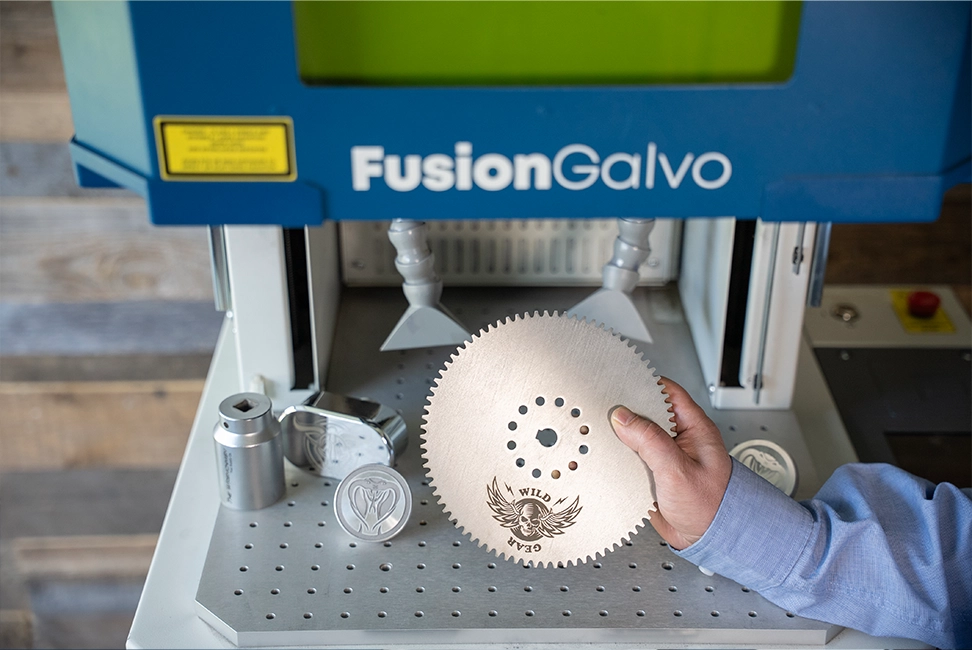Autonosien merkintä kuitulaserkoneilla
Autoteollisuus käyttää laajasti sekä tasokuitulasereita että galvo-kuitulasereita erilaisissa valmistusprosesseissa. Kuitulasereita käytetään autoteollisuudessa osien ja komponenttien pysyvään merkitsemiseen sarjanumeroilla, logoilla, viivakoodeilla ja paljon muulla. Ne voivat merkitä ja syövyttää metalli- ja ei-metallisia materiaaleja, mikä tekee niistä erittäin hyödyllisiä autovalmistajille.
Yhteensopivat materiaalit
Insinöörit suunnittelivat sekä kuitu- että galvolaserkoneita paljasta metallia ja erilaisia teknisiä muoveja merkitsemään. Yleisiä kuitu- ja/tai galvolaserilla merkittyjä materiaaleja ovat:
- Metallit: ruostumaton teräs, alumiini, kupari, messinki, titaani, kulta, hopea, platina ja paljon muuta.
- Muovit: Muovit: ABS, polykarbonaatti, akryyli, polyeteeni ja paljon muuta.
- Tekniset materiaalit: piikiekot, hiilikomposiitit jne.
Yleisiä lasersovelluksia autoteollisuudessa
Valmistajat käyttävät tasokuitu- tai galvolasereita auton osien merkitsemiseen, koska ne ovat tarkkoja, nopeita ja joustavia. Tässä on joitakin yleisiä sovelluksia, joita voidaan tehdä molemmilla näillä laserityypeillä.
Sarjanumerot ja VIN-merkintä
Auton osilla voi olla yksilöllinen sarjanumero eli VIN-koodi seurantaa ja laadunvalvontaa varten. Sarjanumero eli VIN-koodi yksilöi jokaisen yksittäisen osan. Tämä auttaa varmistamaan, että osa täyttää laatustandardit. Se auttaa myös seuraamaan osaa koko valmistusprosessin ajan.
Viivakoodit ja QR-koodit
Autonosien viivakoodien tai QR-koodien lasermerkintä auttaa niitä jäljittämään automaattisesti. Se auttaa myös varastonhallinnassa ja laadunvarmistuksessa toimitusketjussa
Vaatimustenmukaisuusmerkintä
Auton osat on merkittävä CE-merkinnän, RoHS-yhteensopivuuden tai turvallisuussertifikaattien kaltaisten sääntöjen noudattamiseksi. Kuitulaserit voivat merkitä osiin tarkasti vaatimustenmukaisuussymboleja, logoja tai tekstiä.
Väärentämisen vastaiset toimenpiteet
Lasermerkintä voi auttaa estämään väärennetyt tuotteet lisäämällä auton osiin turvaominaisuuksia. Näihin ominaisuuksiin voi kuulua pientä tekstiä, salaisia koodeja tai merkkejä, jotka osoittavat, jos joku on peukaloitu osiin. Tämä auttaa estämään väärennöksiä.
Osan tunnistus
Osien numerointi auttaa tunnistamaan ne kokoonpanon, korjauksen ja huollon aikana.
Logo ja brändäys
Laserilla voidaan lisätä logoja, tuotemerkkejä tai muita brändäyselementtejä auton osiin
Päivämäärän ja kellonajan leimaaminen
Autonosien päiväysten merkitseminen auttaa seuraamaan varastoa ja takuita.
Laser-pinnan teksturointi
Laserpintateksturointi voi vähentää auton osien, kuten jarrupalojen, kytkinlevyjen ja vaihteiden, kitkaa. Tämä voi auttaa heitä suoriutumaan paremmin ja kestämään pidempään.
Materiaalin jäljitettävyys
Autonosissa käytetyt merkintämateriaalit, kuten seoskoostumus tai materiaalilaatu, tarjoavat tärkeää tietoa kierrätys-, huolto- ja korjausprosesseja varten.
Komponenttien kokoonpanoapuvälineet
Lasermerkintä voi auttaa auton osien kokoamisessa näyttämällä ohjeita, oppaita tai merkintöjä osissa. Tämä helpottaa kokoamista ja vähentää virheitä.
Täydellinen valinta
Tasokuitu- ja galvo-kuitulaserjärjestelmät voivat merkitä materiaaleja nopeasti ja tarkasti autoteollisuudessa. Ne voivat merkitä metalleja, muoveja, keramiikkaa ja komposiitteja tarkasti. Nämä ominaisuudet tekevät niistä ihanteellisen ratkaisun erilaisiin auton osien merkintäsovelluksiin.
ASIAKAS VALOKEILASSA:
Millaisia arvosanoja voit saavuttaa?
Kaiverra erilaisia yleisiä merkkejä nopeasti ja helposti
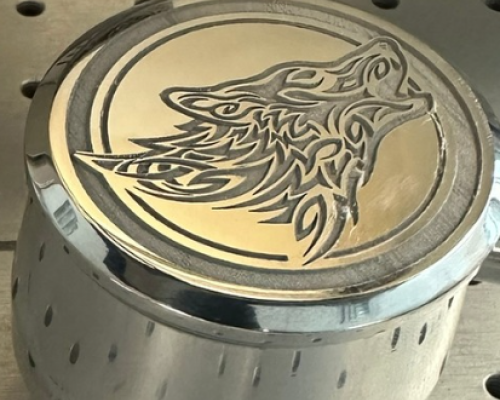
etsaa
Ihmiset käyttävät usein etsausta teollisiin tarkoituksiin työkalujen tai osien merkitsemiseen sarjanumeroilla, logoilla ja viivakoodeilla. Syövytysprosessi poistaa materiaalia metallista. Materiaali otetaan pois viivakoodin tai datamatriisikoodin kaltaisen merkin tekemistä varten. Tämä luo selkeän jäljen metalliin matalan kaiverruksen kautta.
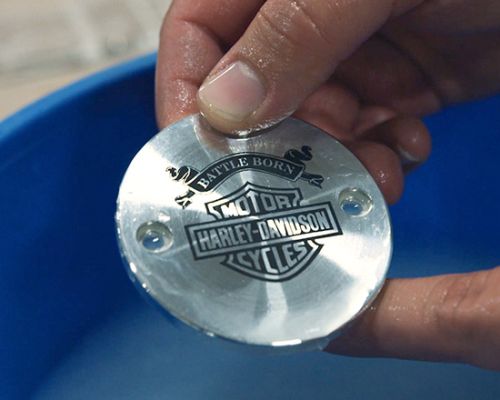
Karkaista
Hehkutettu merkki on kuin kiillotusprosessi. Laser lämmittää metallin lähelle sulamispistettä, mikä aiheuttaa värinmuutoksen materiaalin pintakerrokseen. Metallityypistä riippuen hehkutus antaa usein tumman, lähes hohtavan ulkonäön. Samoin voit käyttää kuitu- ja galvo-parametriasetuksia tuottaaksesi tarkoituksella erillisiä värejä tietyille materiaaleille.
Koska metallista ei poisteta materiaalia, tätä tekniikkaa käytetään usein ihmiskehossa käytettävien lääkinnällisten laitteiden kanssa. Hehkutus luo tumman jäljen ilman leikkauksia tai matalia kaiverruksia, toisin kuin merkkaus ja etsaus.

Kiillottaa
Lasersäde lämmittää materiaalin pintaa luoden kiillotettua metallia, joka tunnetaan myös nimellä "peilattu". Tämän jälkeen pinta jäähtyy, jolloin siitä tulee kiiltävä. Yleisin mattapintaiselle metallille, tämä tekniikka luo jälkiä, jotka voivat näyttää lähes holografisilta.
Toisin kuin etsaus, lämpö muuttaa metallin pintaa poistamatta siitä mitään materiaalia. Tyylikäs ulkonäkö on yleinen hienoissa kylteissä ja korkealaatuisissa tuotetarroissa. Sitä käytetään antamaan niille hienostunut ja ainutlaatuinen ulkonäkö. Peilipinta luo sävy sävyyn -ilmeen merkitsemällä metallin.
Ihmiset käyttävät tätä tekniikkaa myös mustaan oksidiin tai vastaavasti tummapinnoitteisiin metalleihin. Voit vaalentaa oksidi-/mustapinnoitetta säätämällä asetuksia. Tämä paljastaa alla olevan metallin värin. Tuloksena on kontrastinen sävy sävyyn -ulkonäkö.
Yleisimmät metallit Epilog Laser Fiber- tai Galvo-koneilla merkattavaksi
Anodisoitu alumiini
Anodisoidun alumiinin laserkaiverrus Epilog Laser -laitteella on loistava tapa luoda selkeitä ja kestäviä merkkejä metalliin. Anodisointi lisää alumiiniin värillisen suojakerroksen, ja laser poistaa tämän kerroksen paljastaen alla olevan vaaleamman metallin. Tämä luo terävän kontrastin, joka erottuu hyvin.
Kaiverretut merkinnät ovat pysyviä ja kestävät kulutusta, säätä ja kemikaaleja. Tämä tekee prosessista ihanteellisen logojen, sarjanumeroiden, viivakoodien tai kuvioiden lisäämiseen esimerkiksi elektroniikkaan, työkaluihin ja kyltteihin. Sekä CO2- että kuitulaserit voivat merkitä anodisoitua alumiinia erittäin tehokkaasti ja tarkasti, mikä tekee niistä ihanteellisen vaihtoehdon metallipintojen merkitsemiseen.
Ruostumaton teräs
Ruostumattoman teräksen merkintä Epilogin kuitu- tai galvo-koneilla tarjoaa merkittäviä etuja autoteollisuudessa.
Kuitu- tai galvopohjaisella laserlaitteella merkityt merkit antavat pysyviä ja kestäviä merkkejä ruostumattomasta teräksestä valmistetuille osille ja komponenteille. Nämä lasermerkinnät kestävät kulumista, kemikaaleja, lämpöä ja korroosiota, joten ne sopivat erinomaisesti vaativiin ympäristöihin ja kriittiseen jäljitettävyyteen.
Kuitu- ja galvolaserkoneet merkitsevät ruostumatonta terästä uskomattoman tarkasti ja yksityiskohtaisesti, mikä varmistaa, että viivakoodit ja QR-koodit voidaan helposti skannata seuranta- ja jäljitystarkoituksiin.
Titaani
Titaanin lasermerkintä Epilog-koneella tarjoaa useita kriittisiä etuja, erityisesti tehokkaassa autonosien valmistuksessa, jossa sekä suorituskyky että vaatimustenmukaisuus ovat tärkeitä.
Titaani muodostaa luonnostaan suojaavan oksidikerroksen, ja lasermerkintä (erityisesti hehkutus) parantaa sitä. Tämän tyyppiselle metallille kuitu- tai galvolaserit tuottavat merkintöjä, jotka ovat kemiallisesti stabiileja, bioyhteensopivia ja kulutusta kestäviä.
Mitä eroja on tasokuidulaserilla ja galvokuitulaserilla?
Tasokuitulaserit ja galvolaserit ovat kahdenlaisia laserjärjestelmiä, joita käytetään eri sovelluksissa. Niillä on ainutlaatuisia eroja suunnittelussa, ominaisuuksissa ja sopivissa käyttötarkoituksissa.
Laserjärjestelmä: |
Tasainen pohja |
FUSION GALVO |
Design: |
|
|
Nopeus/Tarkkuus: |
|
|
Miksi lasermerkintä on parempi kuin pistemerkintä?
-
Korkea tarkkuus
Lasermerkintä on tarkkaa ja täydellistä yksityiskohtaisten kuvioiden, pienen tekstin ja grafiikan luomiseen ilman vääristymiä. Pistemäinen merkintä on tarkka, mutta sillä voi olla rajoituksia hienojen yksityiskohtien saavuttamisessa, erityisesti kaarevilla tai epäsäännöllisillä pinnoilla.
-
Kosketukseton prosessi
Lasermerkintä on kosketukseton prosessi, eli merkintätyökalu ei kosketa työkappaletta. Tämä vähentää herkkien osien vaurioitumisriskiä ja vähentää virheiden mahdollisuutta. Pistemerkinnässä kosketetaan pintaa suoraan.
-
Monipuolisuus
Niillä voi merkitä monia eri materiaaleja, kuten metalleja, muoveja, keramiikkaa, komposiitteja ja paljon muuta. Nämä järjestelmät eivät vaadi paljon asetusmuutoksia. Pistemerkintä voi vaatia säätöjä eri materiaaleille tai viimeistelyille. Toisaalta lasermerkintä tarjoaa enemmän joustavuutta ja voi mukautua erilaisiin valmistustarpeisiin.
-
Nopeus ja tehokkuus
Lasermerkkaus on nopeampaa kuin pistemerkkaus, erityisesti monimutkaisissa malleissa tai suurissa osaerissä, mikä tehostaa työtä. Laserjärjestelmät voivat saavuttaa suuria merkintänopeuksia samalla, kun ne säilyttävät tasaisen laadun ja tarkkuuden, mikä johtaa lisääntyneeseen läpimenoon ja tuottavuuteen autoteollisuuden valmistusprosesseissa.
-
Laatu ja estetiikka
Lasermerkinnällä luodaan näyttäviä merkkejä, joissa on sileät reunat ja kontrasti, mikä tekee merkityistä osista paremman näköisiä ja arvokkaampia. Pistemerkinnät ovat kestäviä, mutta ne voivat aiheuttaa karkeampia reunoja ja epätasaisempia jälkiä, erityisesti tietyille materiaaleille.
-
Ei kulutustarvikkeita
Lasermerkintä ei vaadi kulutustarvikkeita, kuten kaiverrusteriä tai mustepatruunoita. Tämä tarkoittaa alhaisempia kustannuksia ja vähemmän huoltoa verrattuna pistemerkkaukseen, jossa merkkaustapit on vaihdettava säännöllisesti.
Miten:
Tasokuidulla ja galvo-laserilla tehtävän laitteen valinta
Tasokuidulaserin ja galvolaserin välinen valinta riippuu useista tekijöistä. Näitä tekijöitä ovat sovellustarpeesi, budjettisi, tuotantomääräsi ja halutut ominaisuudet.
Ota huomioon seuraavat seikat päätöstä tehdessäsi.
- Mieti, mitä materiaaleja käytät ja mihin tehtäviin laserjärjestelmää tarvitset. Yritykset käyttävät Galvo-lasereita pienten tai kaarevien esineiden merkitsemiseen ja kaivertamiseen niiden nopean skannauksen ja tarkan ohjauksen vuoksi. Tasokuitulaserit sopivat hyvin suurten kappaleiden tai lukuisten pienten identtisten osien merkitsemiseen.
- Galvo-laserit ovat nopeampia kuin tasokuitulaserit merkkaamiseen ja kaiverrukseen, erityisesti pienille tai monimutkaisille esineille. Jos nopeus ja läpimenoaika ovat kriittisiä sovelluksellesi, galvo-laser saattaa olla parempi valinta.
- Galvo-laserit sopivat erinomaisesti tarkkaan ja täsmälliseen työhön, täydellisesti tehtäviin, jotka vaativat hienoja yksityiskohtia tai monimutkaisia malleja. Tasokuitulaserit voivat myös tarjota suurta tarkkuutta, mutta ne ovat hitaampia kuin galvo-järjestelmät.
- Mieti työtilasi kokoa ja budjettirajoitteitasi. Galvo-laserjärjestelmissä on pienempi työtila, mutta ne voivat olla edullisempia kuin tasokoneet. Tasokuitulasereilla on paljon suurempi työtila, mutta ne voivat olla kalliimpia alkuvaiheessa.
- Mieti tulevia tarpeitasi ja sitä, soveltuuko valittu laserjärjestelmä yrityksesi mahdolliseen kasvuun ja laajentumiseen. Valitse järjestelmä, joka tarjoaa skaalautuvuutta ja joustavuutta mukautuakseen muuttuviin vaatimuksiin ja uusiin sovelluksiin.
Ota huomioon tarpeesi, budjettisi ja tulevaisuuden tavoitteesi, kun päätät tasokuitulaserin ja galvolaserin välillä. Mieti, mihin tehtäviin laseria tarvitset ja miten kukin lasertyyppi voi vastata näihin tarpeisiin. Arvioi taloudelliset resurssisi ja määritä, kuinka paljon sinulla on varaa investoida laserlaitteeseen.
Lopuksi, mieti pitkän aikavälin liiketoimintatavoitteitasi ja sitä, miten valittu laser auttaa sinua saavuttamaan ne. Jokaisella lasertyypillä on omat etunsa ja haittansa, jotka voivat vaikuttaa päätökseesi.
Sinun tulisi lopulta perustaa päätöksesi siihen, mikä parhaiten tukee yrityksesi kasvua ja menestystä tulevaisuudessa. On tärkeää harkita näitä tekijöitä huolellisesti ja ehkä keskustella asiantuntijoiden tai toimittajien kanssa ennen päätöksentekoa.
Mitä seuraavaksi?
Jos tarvitset merkintää metalliin tai muoviin, ota yhteyttä Epilogiin saadaksesi esittelyn järjestelmistämme toiminnassa. Voit tuoda mukanasi yleisimmät materiaalisi ja selvittää tarkalleen, miten ne reagoivat sekä kuitu- että galvokoneissa.
Voit lähettää meille näytteitä laboratorioomme, ja me testaamme ne puolestasi. Voimme auttaa sinua materiaalin kanssa ja antaa yksityiskohtaisia tietoja käytetystä koneesta, laserparametreista ja muusta.
Soita meille numeroon 888-437-4564 tai lähetä sähköpostia osoitteeseen sales@epiloglaser.com varataksesi esittelyn tai saadaksesi lisätietoja!
Kaivertaminen on helppoa!
Tulosta laseriin mistä tahansa grafiikkaohjelmistosta
Taideteoksen asetukset
Suunnittele suosikkiohjelmistossasi
Materiaalin asetukset
Määritä nopeus ja teho materiaalin mukaan
Aloita kaiverrus!
Lähetä työ laserille ja paina go!
Mitkä koneet sopivat parhaiten auton osien merkitsemiseen?
-
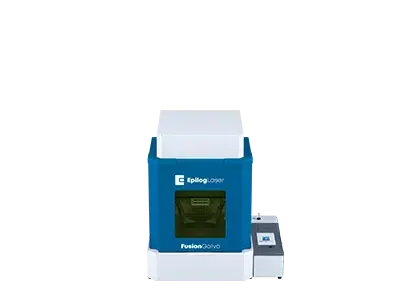
Fusion Galvo
Kone metallin merkkaamiseenTyöalueMax 6" x 6"
(152 x 152 mm)TyyppiKuitu
Teho30–100
(MOPA)Fusion Galvo on Epilogin teollisuusmetallimerkintäjärjestelmä, jossa on säädettävä työalue, salamannopeat yhteydet ja tehokas IRIS-kamerajärjestelmä™ taideteosten nopeaan ja tarkkaan sijoittamiseen. -
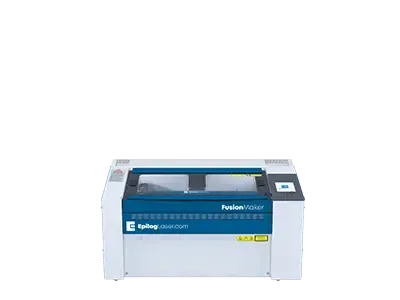
Fusion Edge 12
Business-sarjaTyöalue24 x 12 tuumaa
(610 x 305 mm)TyyppiCO2, kuitu
TehoCO2: 50–60
Kuitu: 30Kompakti laserjärjestelmämme on saatavana useissa tehokokoonpanoissa ja sen kaiverrusnopeus on jopa 3,05 m/s (120IPS). m/s kaiverrusnopeudet. Saatavana myös kuitulaserina. -
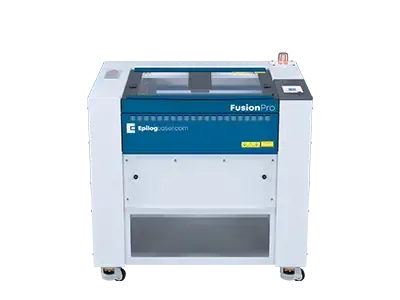
Fusion Pro 24
Teollinen sarjaTyöalue24 x 24 tuumaa
(610 x 610 mm)TyyppiCO2, kuitu, dual source
TehoCO2: 60–100
Kuitu: 60Teollisuuskäyttöön tarkoitetun Fusion Pro -lasersarjamme pienin malli, Pro 24, on saatavana 60, 80 tai 100 watin teholla, ja se voidaan konfiguroida kaksoislähdejärjestelmäksi, jossa on sekäCO2- että kuitulaserominaisuudet. -
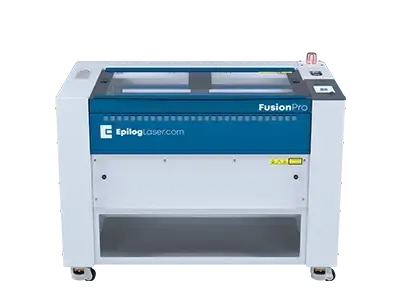
Fusion Pro 36
Teollinen sarjaTyöalue36 x 24 tuumaa
(914 x 610 mm)TyyppiCO2, kaksi
TehoCO2: 60–200
Kuitu: 30–60Kuten kaikki Fusion Pro -lasersarjan järjestelmät, Pro 36 sisältää Epilogin IRIS-kamerajärjestelmän sekä kaiverrusnopeuden jopa 165 tuumaa sekunnissa (4,2 m/s). -
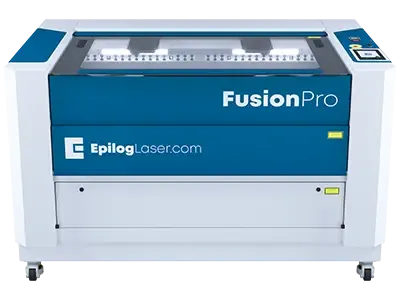
Fusion Pro 48
Teollinen sarjaTyöalue48 x 36 tuumaa
(1219 x 914 mm)TyyppiCO2, kaksi
TehoCO2: 80–200
Kuitu: 60Suurin Fusion Prosta, tämä teollisuusjärjestelmä on saatavana 80, 100, 120 ja 200 watin kokoonpanoissa kaksilähdejärjestelmänä, ja se voidaan liittää verkkoon sisäänrakennetun Ethernetin, USB:n tai langattomasti.
